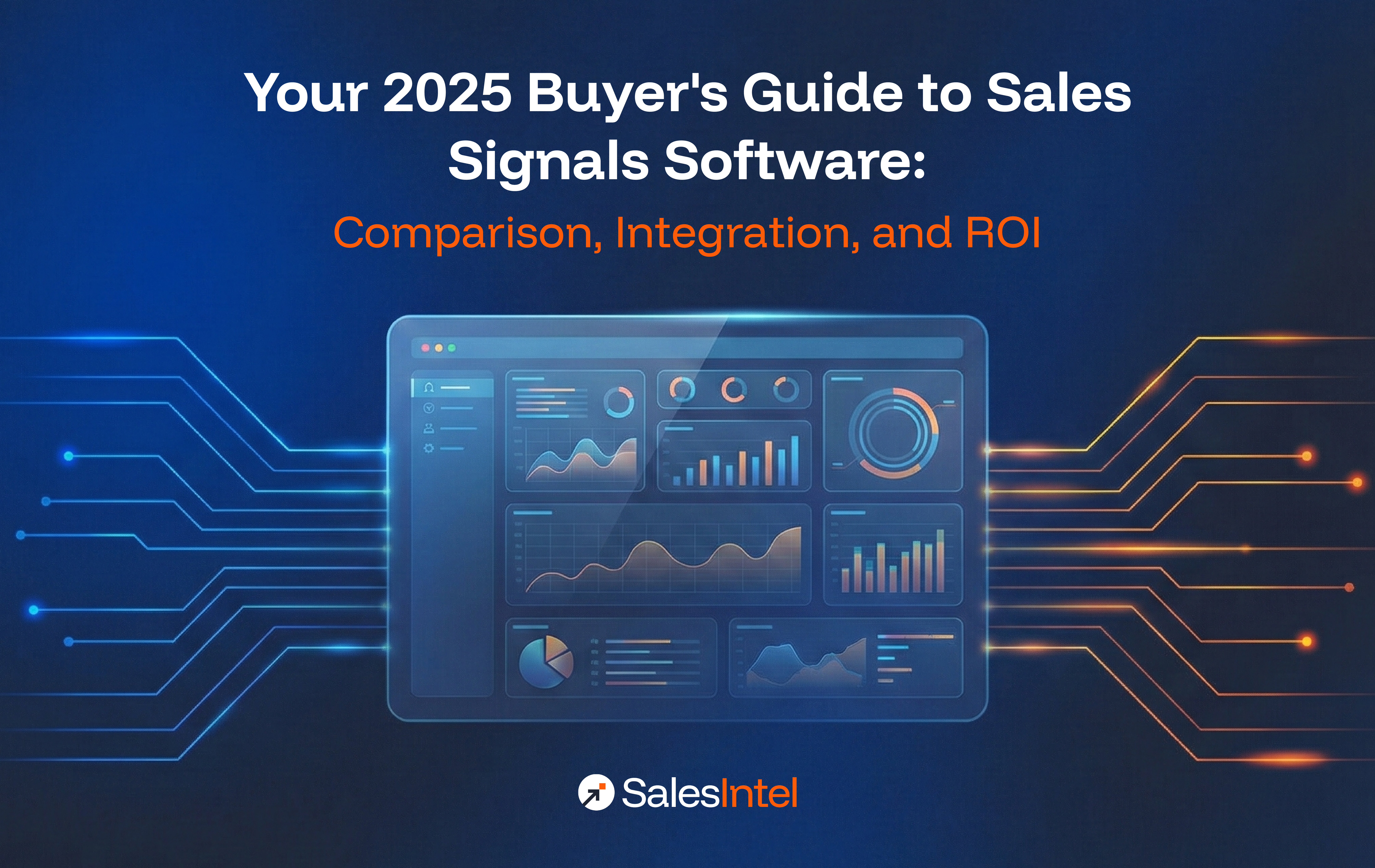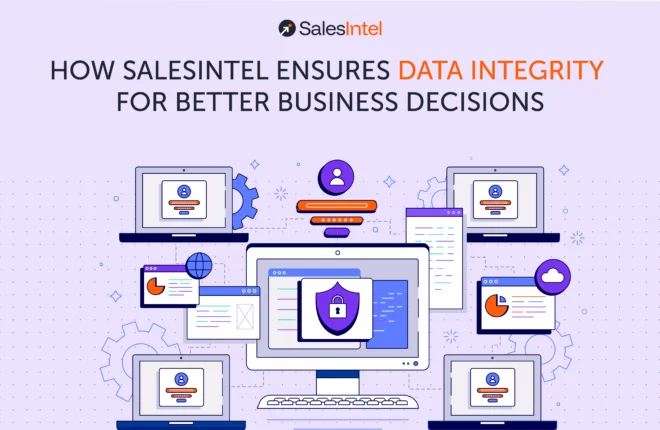Every sales process is unique. Yet, almost every sales team shares similar challenges.
Interestingly, the answer to solving those challenges is identical data. Still, the only way to get your hands on that data is to track the right sales metrics.
The only trouble is that there are just way too many things to measure these days. So, how do you know which ones are worth tracking? Keep reading to find out.
What Are Sales Metrics?
Sales metrics are data points that clearly show how well (or how badly) your sales efforts are going. They make it easy to keep an eye on your sales team’s performance, which is really important when it comes to compensation and commissions.
They also show which b2b sales strategies are working and which ones are a waste of time and resources. On top of that, these metrics can help you see some opportunities for growth.
Why Ignoring Sales Metrics Hurts Your Bottom Line
Imagine trying to navigate through a maze blindfolded? That’s exactly what it feels like when you don’t have any way to know if the sales team’s efforts are paying off or not. You are bound to run into some trouble. Some of which might mean you:
Make Poor Decisions
It’s simple your decisions are only as good as the data or knowledge you have.
So, not having any proper sales metrics means that you don’t allocate your resources correctly. As a result, your sales process suffers.
Miss Profitable Opportunities
You don’t have any way to tell which marketing channels, sales tactics, etc., are working. So, you are left with your gut feeling, which can lead to missing out on good deals.
Come Up With Poor Forecasts
You actually need your metrics to know when to increase your inventory to meet demands, replace one group of products with the other, etc.
If you don’t have data, you end up disappointing customers when it matters most, and this can lead to them going to your competitors.
Fail to Motivate Your Sales Team
Since your sales team has no clear way to measure their performance, they can lose motivation. Besides, you can’t tell who needs an extra bit of support and who to reward to incentivize the rest.
Miss Out on Valuable Customer Insights
You know, data gives you tons of useful client insights, like how much it costs to get that customer, what your customer churn rate is, etc.
Yet, if you aren’t tracking anything, you just can’t tell if your clients are happy and which ones are the most valuable.
Bottom line?
Ignoring sales metrics is not just a lack of direction. It is the move of someone who is actively planning to fail. What are the sales metrics to measure, apart from sales volume and profit? That’s exactly what the next section is about.
The 15 Sales Metrics That Truly Drive B2B Performance
Now, let’s get into the details. What do you have to measure exactly?
#1: Conversion Rate
Conversion rate is the percentage of leads that become your clients (i.e., convert).
It is one of those key sales metrics that you simply can’t ignore. It shows you both your team’s performance and the effectiveness of your whole sales strategy.
The formula is as follows: Conversion rate (%) = total number of deals won / total number of opportunities x 100.
#2: Total Revenue
Total revenue is the gross sales you make. Think of it like the amount you are left with after all the deals are closed (without subtracting your expenses).
The formula is simple: Total revenue = the quantity of products or services sold x the price of the service or product.
Normally, you don’t even need any formula for this one because your accountant will definitely be able to tell you what your overall earnings are. Even if you don’t have an accountant, you are likely already keeping track of this.
#3: Cost of Selling
Cost of selling is another key sales metric to track for sales managers. It lets you compare the sales expenses with the revenue you get. This is a great way to know if your investment is paying off and if your resources are wisely distributed.
For example, you could be overspending to get new customers. So, tweaking your strategies to engage more with the old clients might be more profitable (or turn into an additional income stream).
But you can’t know this if you don’t check your cost of selling. So, how do you figure this out?
There is no real formula for this one, as the cost of selling = all the expenses related to your sales process.
Note: This isn’t Customer Acquisition Cost (CAC). The cost of selling includes (almost) all expenses you need to sell your product/service to your prospects.
#4: Average Customer Lifetime Value (LTV)
Average customer lifetime value shows how much you’ve earned from each client from their first purchase till today.
Why bother with this metric at all?
Well, for one, it lets you know which buyer segments are the most valuable to your business. Plus, you can find those who need a little more investment of your time to improve their profitability.
The formula? Customer lifetime value = average purchase x average purchase frequency x average customer lifespan.
You can make this as generic as you wish, meaning that you can calculate it both for all your clients and only some customer segments.
#5: Market Penetration Rates
Market penetration rate shows what percentage of the target market is your clients.
This is one of those metrics that can help you understand how effective your marketing and sales are (if growing the market share is your goal, of course).
Most times, a low rate here is an indication that you might need to tweak your ideal customer profile or your sales strategy to cover more of the market.
Still, this doesn’t have to be your goal, especially if you have a very niche product/service where you literally need just a couple of dozen clients.
The formula for this one is Market penetration rate (%) = your clients / all possible customers (the whole market you target) x 100.
#6: Average Sales Cycle Length
Average sales cycle length is another useful sales metric to track.
It measures the time it takes for potential leads to go through the whole sales cycle and become a successfully closed deal.
If your average sales cycle’s length is short, that’s good news. That means faster revenue and happier teams. But if it’s longer, it may mean that there are bottlenecks you need to fix to make it more efficient. That might just be the specifics of your niche, so remember that.
How do you calculate it? Average sales cycle length = total number of days (months, years) to close all the deals / total number of deals.
#7: Email Open Rate
Most businesses are sending out tons of marketing emails.
The good news is there’s a way for you to know how many of those actually get opened. This is known as the email open rate.
It refers to the percentage of recipients who take the time to click on your message and see what you have to offer. Keeping close tabs on this metric is a good way to measure how good your email marketing strategy is.
Best part? The formula is pretty simple: Email open rate (%) = number of unique email opens / number of emails delivered (not sent) x 100.
Of course, you only need this metric if you use email marketing as one of your tactics.
#8: Monthly Recurring Revenue (MRR)
If you are a subscription-based business, then MRR is a very common (and a much-needed) metric to keep track of. It shows you how much income you can expect to earn every month based on the number of subscribers you have.
Thanks to this, you not only predict what revenue to expect next month, but you can quickly spot when your subscriber base is growing or dropping.
Bonus perk: it always comes in handy when you need to convince investors to pitch their tent with you.
The MRR formula is as follows: Monthly recurring revenue = average revenue per user x the total number of subscribers.
#9: Win Rate
Win rate is the percentage of successfully closed deals out of all opportunities (both won and lost deals).
This is one of those sales performance metrics that helps you understand whether your sales strategies are actually good. Because it comes down to either winning or losing your potential clients. And obviously, the more wins you have, the better you’re doing.
Besides, this metric can be useful for finding those “stars” of your sales team.
The formula? Win rate (%) = number of opportunities won / total number of opportunities × 100.
#10: Percentage of Revenue From the Existing Customers
How do you know that your customer retention strategy is working?
You will easily find that out when you look at the percentage of revenue generated from your recurring customers when compared to the new buyers.
This can be useful for both subscription-based businesses and those that offer a “one-time” product/service. After all, your existing clients can expand their orders, come back for slightly different things, etc. Plus, it could also include upselling and cross-selling.
And as always, there is a formula for this one.
Percentage of revenue from existing customers (%) = revenue from recurring clients / total revenue × 100.
#11: Upsell and Cross-Sell Rates
Upselling and cross-selling are some of the most fundamental sales tactics that help you grow your earnings. So, it’s important to track them.
You probably already know this, but here is a tiny recap (just in case):
- Upselling convinces your existing customers to buy higher-value products or upgrade some features.
- Cross-selling encourages your clients to get more complementary products/services.
Why should you track your upsell and cross-sell rates? Because the higher these rates are, the greater the indication that you have an effective sales strategy. Plus, it shows a happy customer base — people are not likely to keep buying if they don’t like your products/services.
How do you calculate both of these rates? Quite easy:
- Upsell rate (%) = number of clients who upgraded / total number of clients x 100.
- Cross-sell rate (%) = number of clients who bought an extra / total number of clients x 100.
#12: Sales Velocity
Sales velocity helps you measure how fast your sales team generates revenue over any particular period of time (daily, weekly, monthly, etc.).
This basically shows how quickly your sales reps turn their time into money for your business.
That’s why it’s one of those sales team metrics that can track the efficiency of your entire sales process when it comes to revenue generation.
And the formula? Sales velocity = Number of qualified opportunities x average deal value x win rate / average sales cycle length.
#13: Pipeline Value
At this point, you probably have enough sales team performance metrics to know how well your business is doing.
But what if you want to predict the potential amount of revenue you will eventually get from all those closed deals? That’s where pipeline value comes in.
Now you’re thinking: “How can I know when there’s no way of telling if the deal will go through?” No worries. There is a formula that factors in the probability of winning each deal.
Pipeline value = ∑ (deal value x probability of closing (%))
Alternatively, there is also a simpler formula if your deals are (almost) equal in size and the probability of closing is also nearly the same:
Pipeline value = number of deals in pipeline x average deal size x average win rate.
#14: Quota Attainment
Ever wanted to know who on your sales team managed to hit their target? Looking at your quota attainment rate will tell you the story.
Often, you don’t have to start tracking this metric because your sales reps already report on this one. Plus, many tools calculate this automatically (more on this later). Still, if you don’t have any documentation/reporting in place, it might be a good idea to start doing this.
Depending on your sales cycle, you’ll track this daily, weekly, quarterly, etc. Check what makes more sense for you.
If you don’t use any software for this, the formula is: Quota attainment = total actual sales of a person or a team / sales target (quota).
#15: Deal Slip Rate
No matter how polished your sales process is, not all deals will go through. It’s totally okay, but you want to know how many of those opportunities you lose, right? This is why you need the deal slip rate metric.
If you’ve always wanted to find your sales pipeline leaks, you really want to track this one and get deeper into why it happens and at what stage.
Plus, your reporting and forecasts will get much more accurate thanks to this one.
The calculation here is easy (you might have even guessed it):
Deal slip rate (%) = number of opportunities lost / total number of opportunities × 100.
Measuring What Truly Matters in Sales
After we’ve listed all these metrics, you might be lost, not knowing how to track all that. But here is a thing — you don’t necessarily have to measure all of them. Why so?
Well, each team is different, so your focus may vary as well. Besides, we’re all at distinct stages.
So, if you haven’t been tracking anything consistently, start with 2-4 metrics that make the most sense to you.
First, build a system and then understand what you need to track. This works better than collecting data you might not even use.
And here’s the thing — the fewer actually important metrics you track, the clearer your vision and goals become to your team.
Understanding Leading and Lagging Indicators
When it comes to measuring your sales performance, you might come across these two terms — leading and lagging indicators. What do they mean?
Leading Indicators
Leading indicators are like early signals that can give you an idea of how your future sales performance may look like. In other words, it isn’t about your past achievements, but about your future opportunities.
Sales activity metrics usually fall here. Let’s see how this works in real life:
- Say, you had a high email open and/or response rate. It’s a good leading indicator, showing you may have more conversions soon because these metrics are normally connected.
- Another example is when many people click your link to sign up for scheduled demos. Again, it shows you a “brighter” future for your sales.
Lagging Indicators
While leading indicators give you an idea about the future, lagging indicators don’t reveal any predictions. Instead, they show what has already happened (i.e., how your sales team has already performed).
Most revenue-based metrics fall under this category.
This includes total revenue generated, sales velocity, conversion rate, and other similar metrics.
Strategies for Effective Sales Metric Tracking
Measuring something is one thing. But actually tracking your team’s performance effectively is a whole different story. These are the best strategies that can help you make your assessments more efficient:
- Don’t try to track every single metric. Your main goal is to understand how to improve your sales performance, not measure everything you can.
- Set realistic goals. Too high quotas and an overstretched staff could lead to burnout, which is the absolute worst thing for long-term progress.
- Automate as much as possible. This reduces the margins of error and saves time.
- Visuals over text. If you want people to remember your strategy and actually understand the bigger picture, go for a visual presentation.
Top Tools for Tracking Key Sales Metrics
Of course, when it comes to software, the choice will be different for every business. We all have different budgets, goals, and needs. So, instead of recommending the exact tools, let’s see the types of software you might need:
- CRM solutions. These had to be on the list. They’re perfect for automatic data collection, sales process tracking, keeping everyone in the loop, etc.
- Sales engagement software. This lets you see buyer activity, including email open rates, content engagement metrics, etc.
- Sales intelligence tools. These are super handy for gathering insights about your prospects. Not every team uses them, but they’re worth exploring.
- Sales productivity tracker. This helps track your sales team’s efficiency and comes with most CRMs (but not always).
Conclusion
Knowing what sales metrics to track is only the beginning of the journey. What matters most is what you do with that knowledge. If the data you collect doesn’t help your sales team improve, it’s the wrong data.
The idea of all these calculations comes down to selecting the metrics that actually matter for your business.
More isn’t better here. After all, you don’t want to overwhelm your team with tons of things to track — that just adds unnecessary workload and tension to everyone’s plate.




